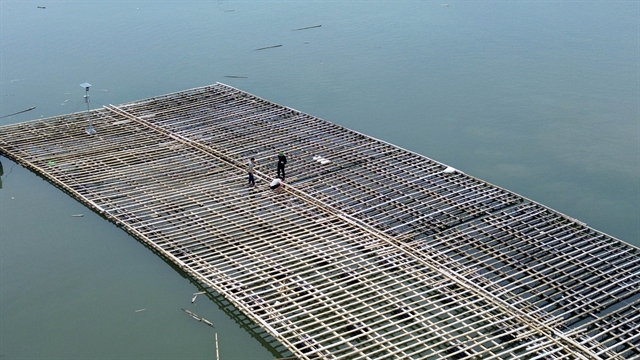 Society
Society

 |
| People in Hà An Ward, Quảng Ninh Province, inspect and reinforce seafood farming rafts before typhoon Wipha arrives. — VNA/VNS Photo |
QUẢNG NINH — Typhoon Wipha is closing in on northern Việt Nam, with its erratic path prompting urgent preparations in Quảng Ninh province and the port city of Hai Phong to safeguard residents, infrastructure, and economic assets ahead of an anticipated landfall.
In Quảng Ninh, locals are reinforcing rooftops, securing aquaculture rafts, and steering fishing vessels to safe harbours. Tourist boats have been relocated to designated storm shelters to shield visitors and operators.
Competent forces have issued an urgent directive suspending departure permits for passenger boats in the province.
In Hải Phòng, a bustling coastal city, authorities activated a full-scale storm response by 1 pm on July 20, coordinating across agencies, communes, wards, and special economic zones.
The municipal People’s Committee said it had deployed emergency plans by 6pm on July 19, tailored to each area’s risk levels. The city has herded 1,657 vessels with 4,668 crew members to safe anchorages and issued warnings to nearly 9,900 aquaculture cages and over 16,000 tourists on Cát Bà Island, including roughly 2,500 foreigners.
All vessels remain in communication with authorities, with none stuck in the storm’s danger zone, the committee reported. Within Hải Phòng’s maritime zone, 71 ships carrying 690 crew members are safely anchored.
Evacuation plans are ready for low-lying, coastal, and riverside areas across 114 communes, wards, and special zones.
Inspectors checked 180 old apartment blocks, tagging 59 as Grade D, the highest risk level for structural failure. To fend off strong winds, the city has chopped and shored up urban trees to stop branches from smashing traffic, power lines, or wrecking construction sites. — VNA/VNS